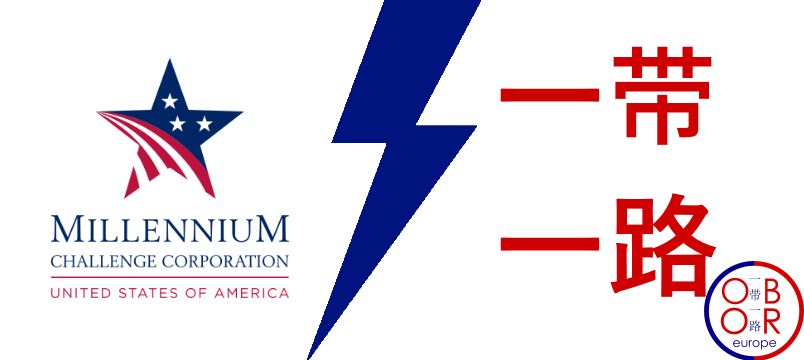by Natasha Fernando and Vijay Prasad Jayshwal

Foreign aid and grants are one of the defining features of Nepal and Sri Lanka’s foreign relations and economic development. Politics of foreign aid in the context of Sri Lanka and Nepal are marred by geopolitical constraints. Both countries are in a tussle for parliamentary approval to formalize the United States’ Millennium Challenge Corporation Compact (MCC) while balancing their relations with China. Both Nepal and Sri Lanka are aid and loan recipients of China enmeshed in the Belt and Road Initiative (BRI). Sri Lanka’s key BRI investments include the Colombo International Financial City and the Hambantota Port while in Nepal, rail and road connectivity, tourism, energy, agriculture and establishment of a free trade area are key BRI developments. China’s interest in Sri Lanka is more focused on maritime connectivity while BRI in Nepal is all about rail and road connectivity. This presents a curious dilemma for both countries to decide on where does the MCC fit in?
What is the Millennium Challenge Corporation?
The Millennium Challenge Corporation (MCC) proclaims to be an independent U.S. foreign assistance agency. MCC also claims to be different from other agencies because of their selection process, time limitation of five years to complete the project and enabling locals to design the development programme to suit the country interests. Although MCC claims to be an independent organization, its structure suggests a nuanced soft power projection of the US. The Board of Directors of the MCC is comprised of the US Secretary of State, Secretary of the Treasury and US Trade Representative. The MCC has invested more than US$13 billion for grant programmes which were successful in countries such as El Salvador and much less successful in Senegal and Mongolia. This is partly because the criteria for selection such as ‘commitment to good governance’ is subject to change. Regime changes, elections and domestic politics have always impacted implementation of MCC related projects. The case studies of Nepal and Sri Lanka testify that development projects envisioned under grant programmes are highly contingent on both domestic politics and geopolitical challenges.
The MCC Compact with Nepal was a US$ 630 million project, with US chipping in $500 as grant investment and $130 from Nepal government which is considered crucial for Nepal especially since a quarter of the Nepal population lives below the US$ 1.90 poverty line. The project is expected to benefit almost 80% or 23 million people. In Sri Lanka, The MCC approved a US$ 480 million grant for five years in April 2019 to improve transport and commercial land administration. Out of this grant, a staggering US$ 350 million is to be invested in improving public transport and minimizing traffic congestion. Studies have pointed out that Sri Lanka’s present infrastructure financing requirements are estimated at US$ 23.9 billion and Chinese infrastructure investment alone is insufficient to close the gap. This is likely where the MCC becomes a huge sell-out. The China debt trap narrative and Hambantota port deal increased scepticism towards foreign aid. The difference between the MCC grant and Chinese investments is that, there is no repayment for MCC which is an outright grant.
Geopolitical issues and balancing
China has several strategic insecurities ranging from developing its own landlocked frontiers to gaining access to the Indian Ocean especially through the Straits of Malacca through which 80% of oil to China passes through. China’s BRI is construed as a strategic project to establish Chinese presence in the Indian Ocean Region and develop transnational ties via land and sea. As the European Bank for Reconstruction and Development has mapped out, China’s land connectivity stretches out to Southeast Asia, South Asia, Central Asia, Russia and Europe. Connectivity via the sea stretches out to South Asia, Southeast Asia, South Pacific, Middle-East, Eastern Africa and Europe. The scope and nature of the BRI is considered unprecedented as agreements signed with governments are rooted in secrecy. While the type of agreements signed with BRI countries by the Chinese were criticised for lack of transparency, the MCC grant programmes claiming to be more transparent will eventually pressurize China to be similarly transparent. MCC reaching out to Nepal and Sri Lanka could be construed as strategic, to prevent Indo-Pacific countries from befriending China.
Between the years 2011-2014, China emerged the highest foreign direct investment partner of Sri Lanka totalling US$ 828 million which is a staggering amount compared to American FDI amounting to just US$ 190 million. From 2010-2014, the cumulative total borrowings from China amounted to US$ 3,257.2 million. At some point in time, Sri Lanka needs to repay the Chinese loans and turn large scale infrastructure projects into income generating ones. Foreign aid is no longer an apolitical issue as the recent election of Rajapksa brothers (Mahinda and Gotabhaya Rajapaksa) have shown. Between 2010-2020, there have been two government changes (2015 regime change in Sri Lanka had alleged Indian involvement). Government change and regime flipping by foreign powers is nothing new to South Asia with severe impacts on development projects implemented via foreign aid and grants. In Nepal, signing of the MCC is put on hold until the central committee appointed by the Nepal communist party proposes the necessary amendments for MCC to be approved by the legislative body. Both countries have to balance a triple sphere of influence: China, USA and India. This in the long run is challenging and difficult without prudent foreign policy decision making.
The views expressed in this article are those of the authors, and do not necessarily reflect the views of OBOReurope.
Share the post "Balancing the BRI and MCC: Commonalities in Nepal and Sri Lanka"
